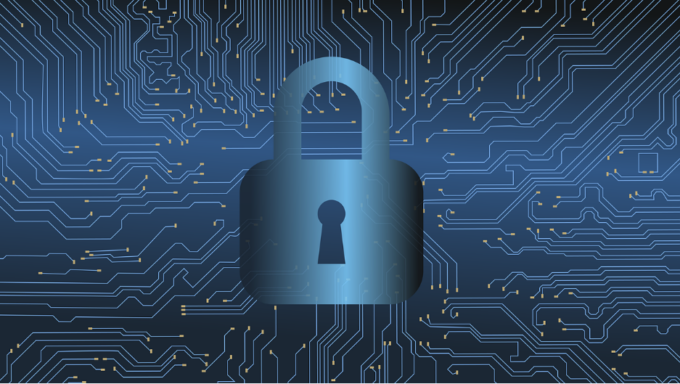Remote security has risen to the forefront of the business world. As countless entities pivot to remote operations, understanding the intricacies of this domain becomes paramount. Dive deep with us as we unravel the nuances of remote security, weighing its advantages against potential pitfalls, and providing actionable strategies for success.
Monitoring and Incident Response
Active surveillance of systems is a cornerstone of remote security. Deploying solutions like Live Patrol can provide comprehensive insights into potential threats, ensuring timely interventions.
But monitoring alone isn’t sufficient. Having a well-defined incident response plan can mean the difference between a rapid resolution and prolonged system downtime. This entails having clear protocols detailing steps to be taken in the event of a breach, from isolation of affected systems to notifying stakeholders.
Post-incident analysis is equally significant. Understanding the nature of the breach, its origins, and potential preventive measures ensures that similar incidents don’t recur. Continuous learning and adaptation are vital to bolstering remote security defenses.
Pros of Remote Security

Source: wrike.com
Remote operations, by nature, bring about a set of advantages. One of the leading benefits is scalability. With the absence of physical constraints, businesses can expand their operations without major capital investments. Servers, databases, and other essential resources can be scaled up or down based on demand, ensuring optimal performance.
Flexibility stands as another hallmark benefit. Employees can access vital systems from virtually anywhere, promoting an adaptable work environment. This geographic freedom can boost morale, potentially leading to increased productivity. Moreover, with systems hosted in the cloud, maintenance, and updates are simplified, often occurring seamlessly in the background.
Lastly, cost savings cannot be ignored. The elimination of physical infrastructure reduces overhead. This is not merely about cutting rental or utility costs. Savings are also realized in areas such as hardware maintenance, on-site security, and infrastructure upgrades. These cumulative benefits present a compelling case for businesses to consider remote security as a viable operational strategy.
Cons of Remote Security
While the advantages are alluring, challenges exist. The dispersion of a workforce can lead to inconsistent security practices. Employees operating from various locations might employ different security protocols, increasing vulnerability. This decentralization often complicates the standardization of security practices, making the organization more susceptible to breaches.
Another potential pitfall is the reliance on third-party vendors. Many remote systems lean heavily on external services, and this can introduce an element of uncertainty. Should a vendor experience a security breach, it could have cascading effects on all connected businesses. This level of interdependency requires rigorous vetting of service providers.
Network vulnerabilities also rise exponentially. As more devices access the system from various locations, the number of potential entry points for hackers grows. Every device, be it a laptop, tablet, or mobile phone, becomes a potential gateway for malicious entities. Ensuring that every access point is secured becomes a monumental task for IT departments.
Best Practices for Remote Security

Source: linkedin.com
Embracing remote security necessitates the adoption of robust practices. A primary measure is ensuring end-to-end encryption. This cryptographic method ensures that data, while in transit, remains unreadable to unauthorized entities. By encrypting data at the source and only decrypting it at its intended destination, risks of interception are significantly reduced.
Regular employee training is pivotal. All staff should be acquainted with the latest security protocols and understand the significance of adhering to them. This includes recognizing phishing attempts, maintaining strong password hygiene, and understanding the importance of regular software updates. By fostering a culture of security awareness, potential vulnerabilities can be minimized.
Another essential practice involves continuous system monitoring. Employing tools that track and analyze system activity can provide real-time alerts about potential threats. This allows for swift action and can mean the difference between a minor hiccup and a catastrophic breach. Regular system audits can also help in identifying and rectifying weak points before they become critical vulnerabilities.
Cybersecurity Threats in Remote Work
In the realm of remote work, the spectrum of threats is vast. Phishing attempts, where malicious entities masquerade as trustworthy organizations to extract sensitive information, rank high on the list. Given the distributed nature of remote teams, the potential for such scams increases, as it becomes harder to validate the authenticity of communications.
Ransomware poses another imminent threat. In such attacks, an external entity gains access to a system, encrypts vital data, and demands a ransom for its release. For businesses, this can lead to significant downtime, financial losses, and reputational damage. The remote dispersion of assets can sometimes amplify the impact of such breaches.
Last, the threat of insider attacks can’t be underestimated. Disgruntled employees or those with malicious intent have the potential to cause extensive damage. Given that they might already have access to key systems, their actions can bypass traditional security measures, making detection and mitigation particularly challenging. Discover the importance of cybersecurity training for employees and learn how to do it properly.
Remote Security Compliance

Source: heffins.com
Compliance remains at the heart of remote security. With different jurisdictions having varying regulations, ensuring adherence becomes crucial. Data protection standards, such as GDPR in Europe, necessitate stringent measures to safeguard user data. Non-compliance can result in heavy penalties and damage to brand reputation.
Beyond regulatory adherence, businesses often have industry-specific guidelines. Sectors such as finance, health, and legal have stringent security and data protection norms. For companies in these domains, compliance isn’t just about adhering to the law; it’s about maintaining trust with their clientele.
Documenting all security protocols is also vital. Should a breach occur, having a comprehensive record of all security measures can aid in damage control. It serves as proof of due diligence and can be pivotal during legal proceedings or regulatory reviews.
Secure Communication Tools
With teams dispersed, effective communication becomes essential. Adopting tools that offer robust encryption ensures that all internal communications remain confidential. Messaging platforms like Signal or Telegram prioritize user privacy and encrypt messages to prevent unauthorized access.
For video conferencing, platforms like Zoom and Microsoft Teams have bolstered their security features in recent years. Features such as meeting passwords, waiting rooms, and end-to-end encryption provide layers of protection against unwanted intrusions.
Beyond messaging and video, businesses also need to consider secure file sharing. Platforms such as Dropbox and Google Drive offer advanced security features, including two-factor authentication and encryption, ensuring that sensitive documents remain protected during transmission.
Final Thoughts
The world of remote security is a vast, ever-evolving landscape. As businesses navigate this domain, understanding its complexities becomes essential. While challenges persist, with informed strategies and continuous adaptation, businesses can not only safeguard their operations but also harness the myriad benefits that remote work offers.
Embracing the future requires both vigilance and adaptability, ensuring that as the digital landscape shifts, businesses remain both secure and efficient.







